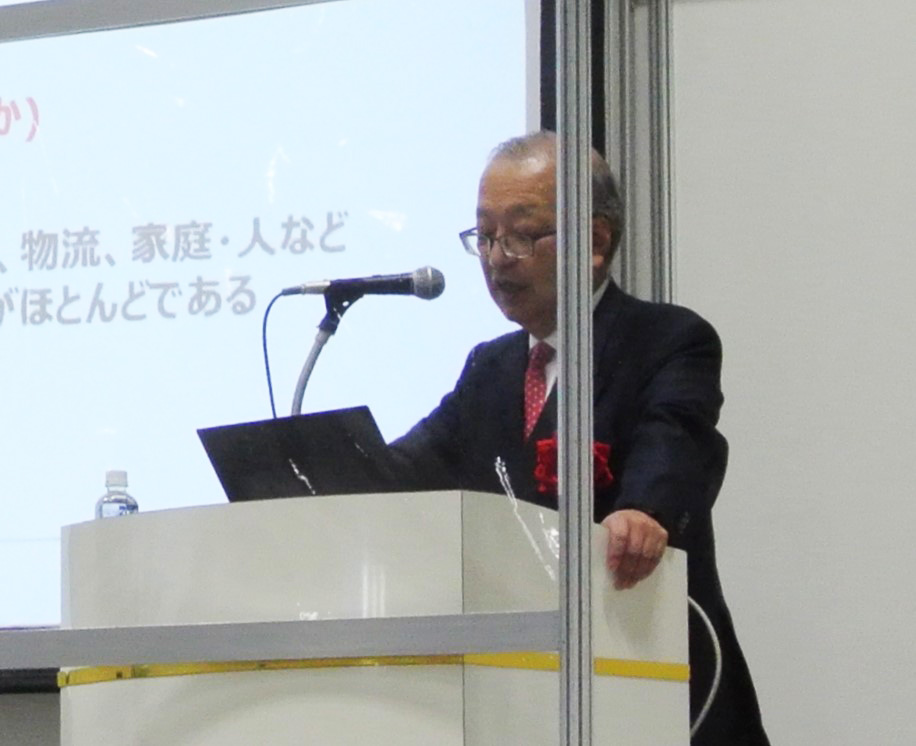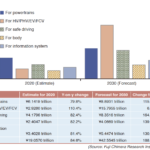ASIA ELECTRONICS INDUSTRYYOUR WINDOW TO SMART MANUFACTURING
Industry Veteran Proposes Japan’s Green Chip Road Map
Kazuya Masu, President of Tokyo Institute of Technology has been working on industry-government-academia collaboration. He is also involved in maximizing sales of top companies. Based on these experiences, Mazu proposed how to strengthen industries including those of semiconductors from the viewpoint of “green innovation.”
This article presents highlights of the lecture made by Masu at The Total Solution Exhibition for Electronic Equipment.

Recently, people often talk about “how things should be” or “there should be”, but it is also important to get things on the viewpoint of “it is desirable”. In the case of semiconductor industries, various factors have been pointed out as the cause of Japan’s drop in standing. At this point, I would like to make a proposition for the semiconductor industry from the standpoint of its desirability.
To Create Integrated System by 2030
The evolution of semiconductors is driven by the integrated power of every semiconductor hierarchy, from materials to circuits and system architectures. Competitive semiconductor industries cannot be realized only by individual evolution at each hierarchy.
The power of semiconductor industries absolutely requires research and development, cutting-edge manufacturing technology, and system integration technology. We would like to create a system to possess and develop them all over Japan by 2030. We will also promote active R&Ds and industrial application of the research results to create core competence and build up pool of intellectual property.
Business Concept Based on DX
Until now, the semiconductor industry has treated semiconductors and chips as goods. It should be transformed into a new business concept in which semiconductor companies provide manufacturing factories around the world with license packages consisting of a series of technological intellectual properties and product development protocols.
In other words, from the business of industrial materials, we will shift to a digital transformation (DX) business that supports all of applications, systems, and platforms. Based on the licensor business, we will create a virtuous cycle that increases profits and grows the power of semiconductors at the same time. This is the desired goal for industries.
Green Chip Superpower
As a goal, therefore, we would like to lead the world as a “green chip (green LSI) superpower” in 2030. By green chips I mean the following, everything is green (zero emission) in the design process and in the materials and manufacturing processes. The factory is operated with renewable energy, pure water is circulated with renewable energy, and transportation is performed with electric vehicle (EV).

We recommend to use green chips in all system equipment that uses semiconductors and promote their regularization and standardization, making “Green Chip Inside” a famous catch phrase. We certify green semiconductor factories and promote the development of materials, processes, manufacturing equipment, and others used in the factories.
Then, in 2050, we will challenge the renewable “Super Green Chip”. We will develop designs to make devices renewable and create infrastructure including their recovery. We will create technology for extracting semiconductor chips from recovered products, and develop technologies and equipment for remanufacturing recycled semiconductor chips. We would like to dominate the world with renewable semiconductors.
Use University Clout
The field of semiconductor devices, which are responsible for information processing in the carbon-neutral society, should be strategically supported by the government. Japan needs to have a presence in both R&D and manufacturing. A drastic government support is necessary. A large part of R&D capabilities can be shared by universities. Universities are regarded as reservoirs of the intellectual property, possessing many accumulations and seeds.
In universities, each researcher may tend to think that “his/her own group is the best”. However, Japanese researchers can form an exclusive management network of semiconductor research through collaboration to promote the utilization of research bases and to develop human resources. They can carry out collaborative research and development from basic science to applied technology. Among many possibilities, I can propose, for example, a “Green Innovation Research Center.” It can contribute to making the government policy and can contribute to competitiveness to the industry.
I would like to propose a cross-industry research fund and industry-government-academia collaboration, such as the Semiconductor Technology Academic Research Center (STARC), which was created jointly by semiconductor manufacturers in Japan. Using this example as a reference, we will expand the movement to all industries and proceed with research that is second to none. What Japan needs now is the desire to challenge something.




